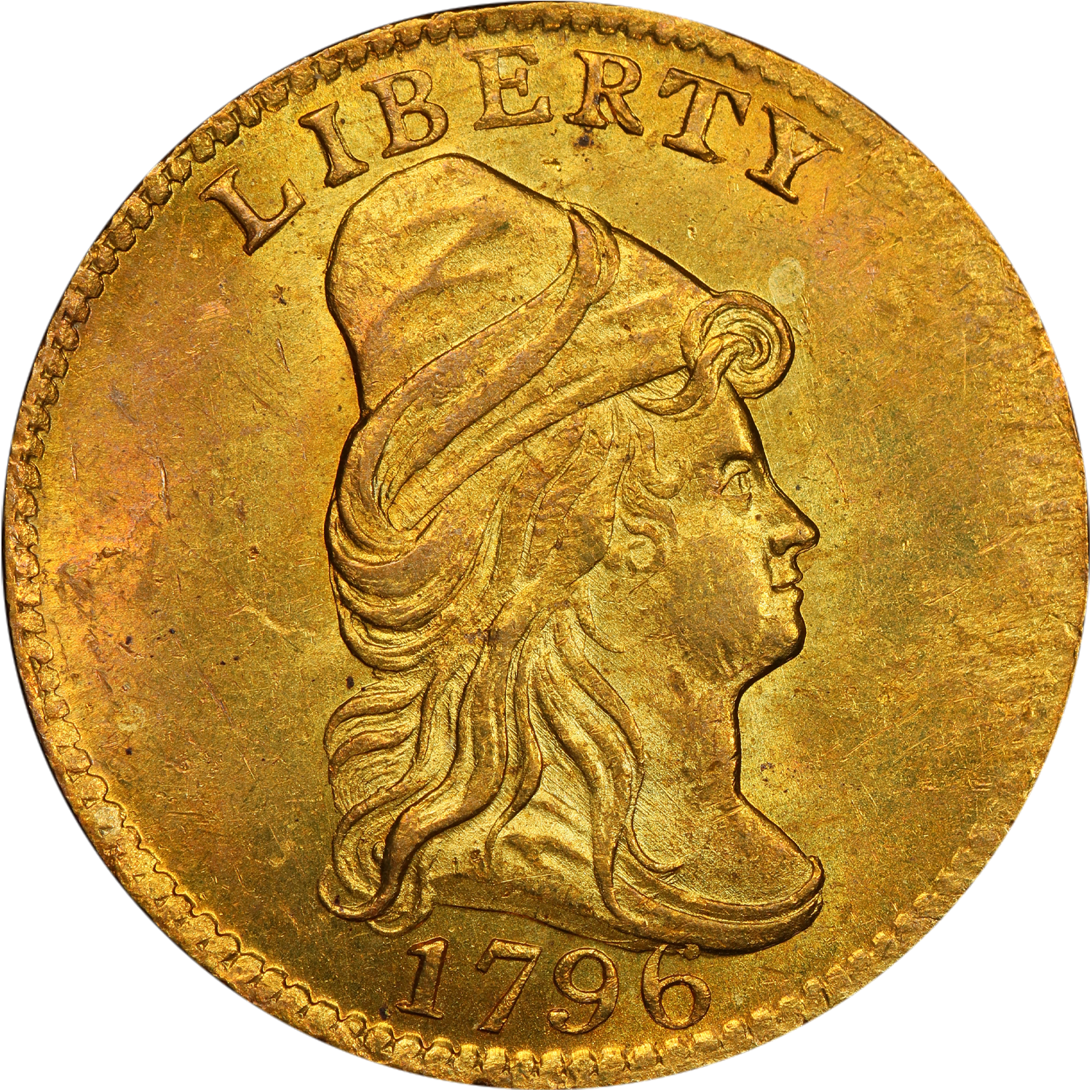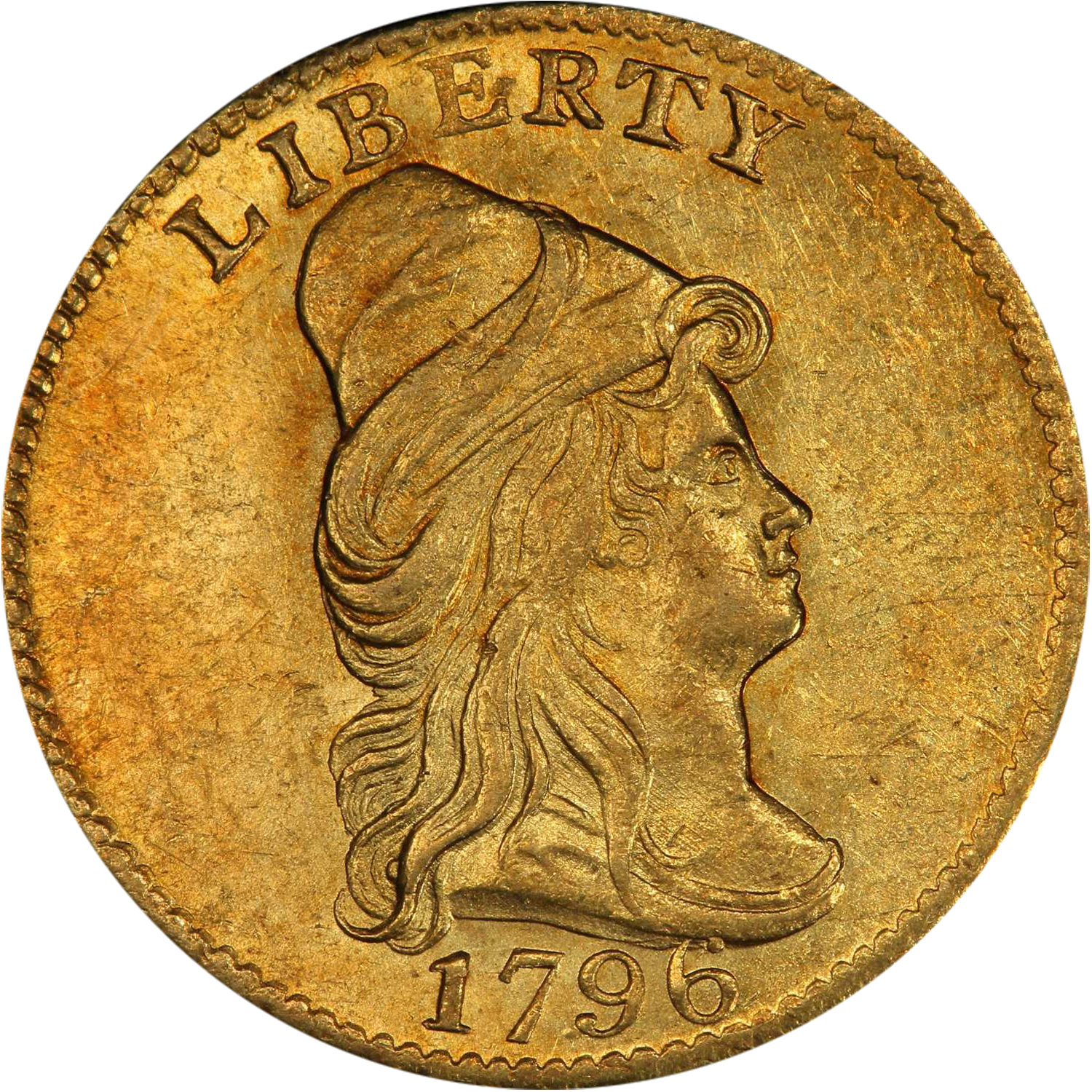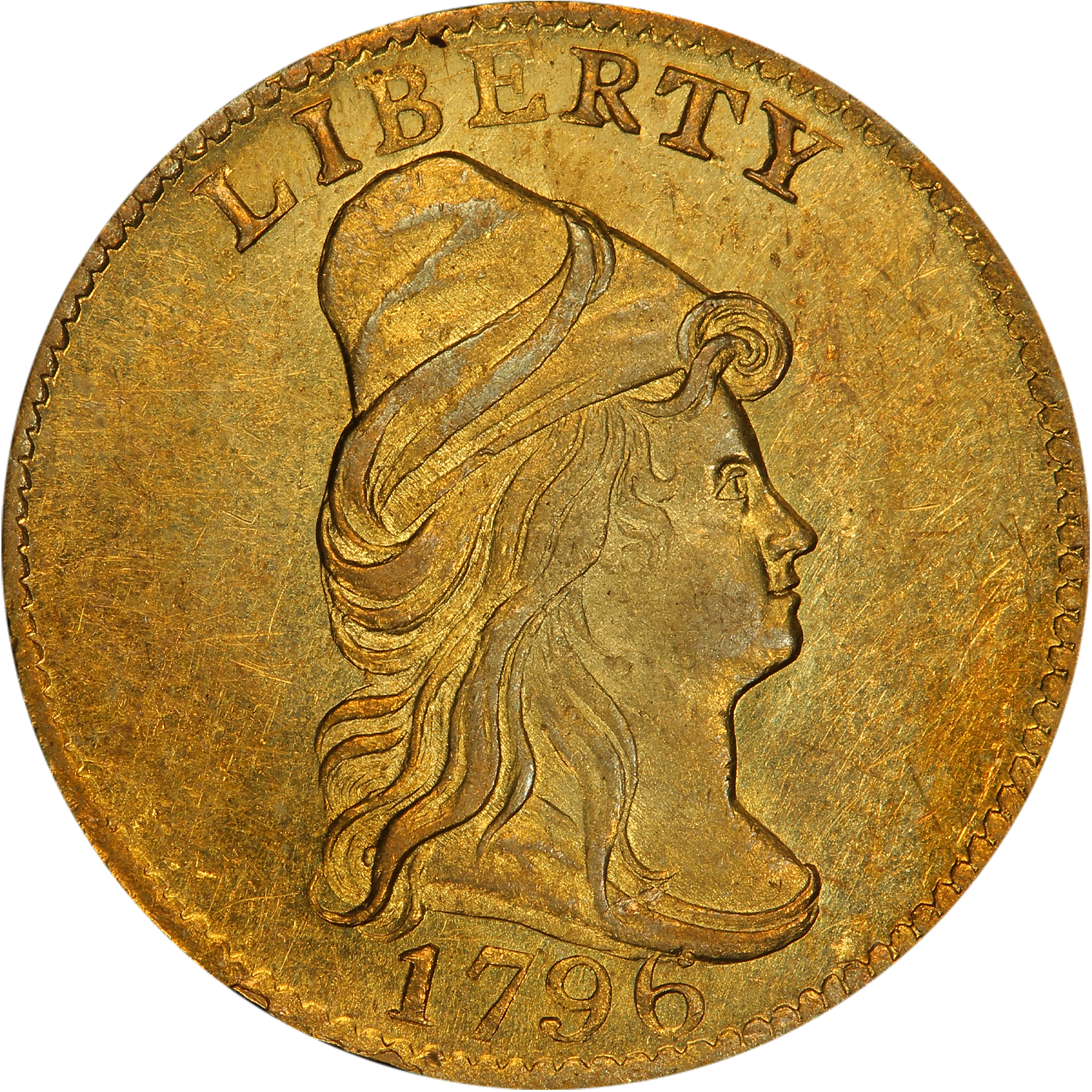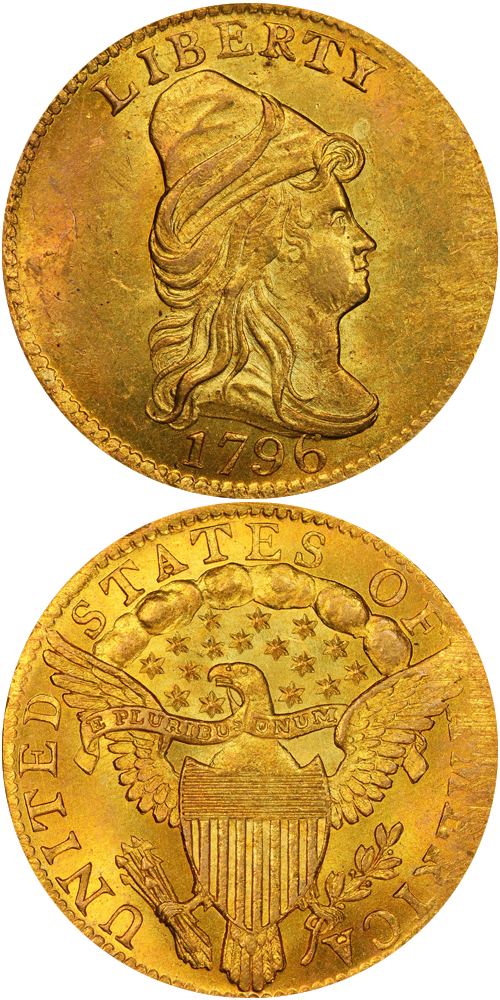1796 Capped Bust Right Quarter Eagle
No Stars
As the very first type of one of our most durable denominations, struck in most years from 1796 to 1929, the 1796 No Stars quarter eagle is an historic landmark. It represents a compromise between the strict decimal approach espoused by Thomas Jefferson, a plan that begat mills, cents, dollars, and eagles, and the fractional mindset that became familiar to 18th century Americans through the use of Spanish and Portuguese gold denominations. The Spanish doubloon, or eight escudos, was divided into halves and quarters worth $4 and $2 respectively. The Portuguese Johannes was worth the same as an eight escudos. The “half joe” of $8 was ubiquitous in early America, and the quarter joe was likewise in common use. The quarter eagle denomination parallels the Spanish pistole, worth two Spanish milled dollars, an intentional near-imitation. Beyond the historic interest in this piece, those who collect United States coins by design type have made this one of the most in demand of all U.S. coins. No other gold coin mimics this variety’s No Stars design, making this particular issue a necessary inclusion in a complete United States type set.
The example to the left was sold by Stack's Bowers Galleries in The Cardinal Collection/A Gentleman's Collection, where it realized $1,380,000.
1796 Capped Bust Right Quarter Eagle, No Stars Auction Highlights
 PCGS MS-65 Sold for $1,380,000 View Lot 1002 |  PCGS MS-62 Sold for $822,500 View Lot 1116 |  PCGS MS-62 Sold for $488,750 View Lot 2324 |






